Lately, everyone keeps asking if our pedals are “true bypass.” There’s been a lot of (successful) hype about it, which has led to the blind belief that true bypass is the crème de la crème. After years of researching and evaluating circuit designs, I came to the conclusion a long time ago that true bypass is not exactly “true.”
Early Bypass Circuits
The first effect pedals for guitar appeared about 40 years ago. Circuit designers wanted to enable musicians to easily switch the effect on and off at the push of a button. So they installed bypass switching. However, there was a very limited selection of electronics parts at the time. The only foot-operable switch was actually designed for use as a power switch in vacuum cleaners and sewing machines. They were a single-pole configuration like this:
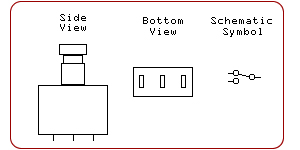
These switches were not exactly high quality parts for audio design, but the engineers had to make do with what was available. Unfortunately, the early bypass circuit configurations had a big drawback. When the effect was in bypass, the input stage of the electronics was still connected to the guitar’s pickups:
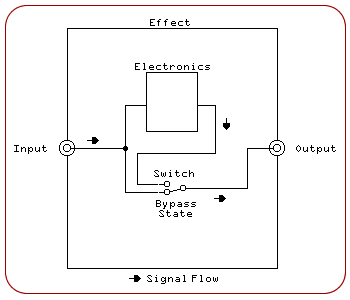
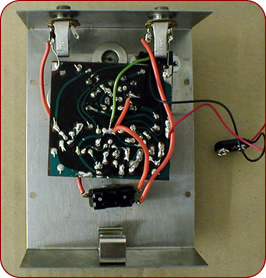
The transistor circuits had an input impedance of about 50kOhm to 100kOhm, while guitar pickups require being connected to circuits of at least 1MOhm (1,000,000-Ohm) to prevent signal degredation. These bypass circuits effectively “loaded down” the pickups, causing an audible difference in the sound. Loading of the pickups reduces high frequencies and volume, causing what is often called “tone sucking” –a lifeless, muffled tone. (Note: with active pickups or preamped signals, this effect is not as noticeable.)
PASSIVE "TRUE BYPASS"
Later, when there was a better choice of switches, engineers started to upgrade to a more sophisticated method of switching with a double-pole switch. See illustration to the right.
What this accomplished was that you were able to prevent the circuit from loading the pickups in bypass. So, “True Bypass” was born. This made a considerable audible difference and became so popular that people started to modify all their old effect boxes to use true bypass.
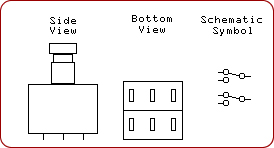
So, is True Bypass Really “True?”
Does true bypass really deliver the best quality signal from guitar to amplifier? Well, it’s only really true on paper.
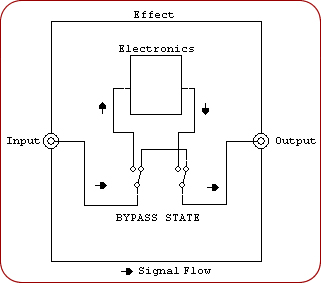
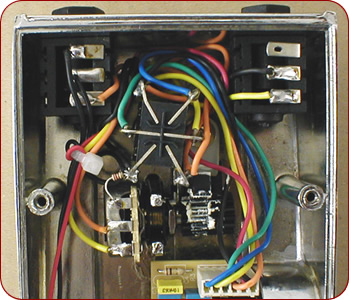
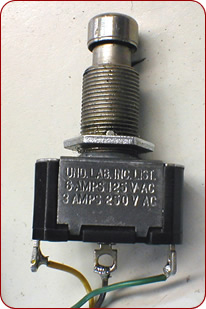
When you employ a double-pole double-throw switch, you will use a switch which is likely similar in design to the original sewing machine switch and never intended for use in audio applications. This usually can be confirmed by looking at the markings on the switch.
If the Voltage/Amperage marking is 120V/1A or higher, then you can be pretty sure that you don’t have a precision device in your hand.
These switches have two main problems for audio:
1. There is a noticeable pop when you switch.
2. They have a fairly high capacitance, typically around 20 pF to 100 pF. High capacitance combined with high resistance attenuates high frequencies, making your sound dull and mushy. Combine this with multiple patch cables and it puts us back where we started with “tone sucking” bypass. (It is not as severe as with the single-pole switch, but it is there nevertheless.) Unfortunately, this problem is also multiplied when several similar systems are in the signal chain.
Enter Active (or Buffered) Bypass
In the mid seventies, engineers developed an active circuit to solve the problems of popping and “tone sucking.” These new designs employed a high impedance input stage which was achievable by using new Field Effect Transistor on Integrated Circuit designs. These high impedance devices matched the input impedance of tube amplifiers (about 1 MOhm) and therefore did not “load down” the pickups.
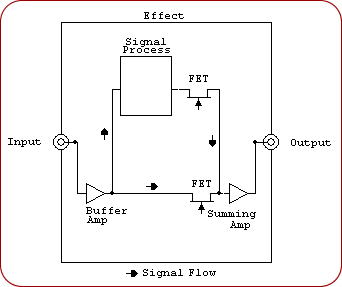
There were other added benefits to using active bypass circuits. Active bypass converts the signal to low impedance making it resistant to “tone sucking” from other pedals and poor quality or extra long cables down the signal path. Designers were able to improve life expectancy over big clunky switches by using smaller, more resilient parts. Active bypass gave the option to use a fast cross-fading (about 50 ms) FET circuit, which eliminates the loud pop associated with the passive true bypass circuit. As a bonus, designers were able to easily add an LED indicator into this circuit.
For passive bypass design, this addition would have required the use of a triple-pole double-throw switch, which was scarce and expensive at the time. In fact, the only drawback of the active bypass system was that if your battery died, then you lost your bypass signal, too. It was a small price to pay for all the other benefits, so this circuit was quickly adopted by most major effect manufacturers. The exceptions are reissue, vintage or vintage-like pedals. Some wah pedals are still made with a single-pole switch.
It should be noted that not all active bypass circuits are created equal. Some are good and some are not. The circuit still has to be designed properly, have the correct impedance and use quality parts.
Then There’s the Recent Development of Digital Bypass.
This is exclusively used by DSP-based products. With digital bypass, the signal never actually bypasses the digital processor. The analog signal from the guitar is still being converted to numbers and then back to analog, but the processor is told not to manipulate these numbers. Digital bypass saves money because no extra parts are needed to switch the bypass signal around the digital processor. All bypass switching is done inside the digital processor using software. The sound quality of this bypass largely depends on the quality of the digital converters used and any band-limiting or anti-aliasing filters on the inputs and outputs of a given design.
However, not all DSP products use this shortcut. Some designs use combinations of the above methods, and others use relays for signal switching. These systems are not as common as the previous ones, and are more often used in rack style effect processors. The bypass sound quality of these systems depends on the quality of the relays used and the circuit design. Some relays give excellent results, others have the same capacitance problems associated with passive footswitch designs.
Why Should I Care About Bypass, Anyway?
Because some designs can noticeably change the sound of your guitar. You may be using any given effect only 10%-20% of the time, but your signal is going through each pedal/processor 100% of the time. So the issue of bypass is surprisingly important.
In order to decide what is right for you, you will need to listen to the products available. To properly audition the difference between these circuits, always test one pedal/processor at a time, using the same exact setup. This means the same guitar and amp with the knobs set at the same levels. More than one effect in the chain could give you false results, depending on the location of the unit in the signal chain.
Of course, in the end, what really matters is that you are happy with the sound. So use your ears, make your own decisions based on the sound, and don’t believe any hype. After all, Jimi did pretty well without “True Bypass.”
Set-Up Tips and Tricks:
1. The bypass circuit in some pedals can be improved by using a double-pull double-throw switch in a true bypass configuration:
a) Vintage pedals using a single-pole double-throw switch.
b) New or reissue pedals using a single-pole double-throw switch.
On the other side of the coin, some pedals will not benefit from a true bypass mod –sonically or mechanically: Boss® and Ibanez® type pedals.
2. You can overcome the sonic shortcomings of the true bypass switch by buffering your guitar’s pickups. This can be as simple as placing a pedal with a buffered bypass between your guitar and the pedal with the mechanical bypass.
3. Make sure you are supplying enough power to your active bypass pedal. A dying battery or weak power supply will reduce the amount of headroom.
4. Make sure you are using quality cables to connect your pedals.
–Andrew Barta, President, Tech 21 USA, Inc.

